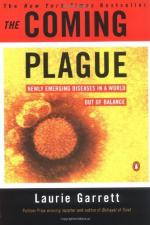
|
| Name: _________________________ | Period: ___________________ |
This quiz consists of 5 multiple choice and 5 short answer questions through Chapter 13: Revenge of the Germs.
Multiple Choice Questions
1. Where did Adam Cargill go after being released from a holding facility in Chapter 4?
(a) Marburg, Germany.
(b) Hamburg, Germany.
(c) Sussex, England.
(d) Warsaw, Poland.
2. Where did Uwe Brinkmann go after being released from a holding facility in Chapter 4?
(a) Marburg, Germany.
(b) Hamburg, Germany.
(c) Sussex, England.
(d) Warsaw, Poland.
3. After the woman that researchers tracked the outbreak of the Lassa virus to had been hospitalized, how many people became ill in Chapter 4?
(a) 16.
(b) 29.
(c) 4.
(d) 7.
4. When Bernhard Mandrella went in for treatment for the Lassa virus, he was given blood from whom?
(a) Pat Webb.
(b) Lily Pinneo.
(c) Jordi Casals.
(d) Daniel Elmer Salmon.
5. Dr. Jeanette Troup was working in _____________ when an outbreak of the Lassa virus occurred.
(a) Kinshasha.
(b) Jos.
(c) Monrovia.
(d) Lusaka.
Short Answer Questions
1. The epidemics of what disease increased due to the Aswan High Dam inhibiting the natural fluctuations in water height?
2. German authorities began to argue with the authorities of ___________ over the Lassa virus in Chapter 4.
3. Blackwater fever was caused by the overuse of what substance?
4. Who was treating Bernhard Mandrella for the Lassa virus when he met Kent Campbell?
5. What is a nucleoside analog reverse-transcriptase inhibitor used for the treatment of HIV/AIDS?
|
This section contains 212 words (approx. 1 page at 300 words per page) |

|




